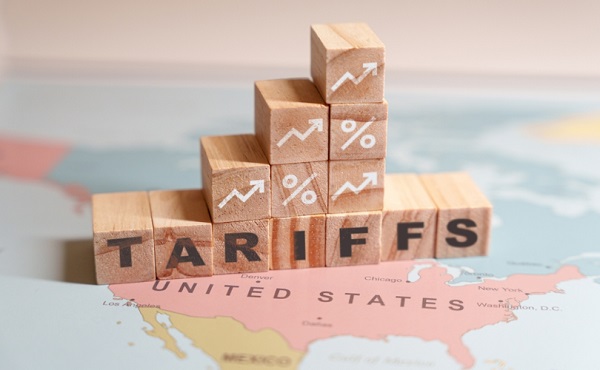conflict
Trump call with Putin: ‘Not a conversation that will lead to immediate peace’
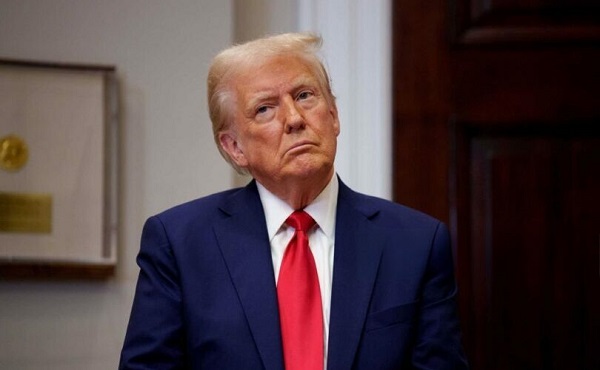
From LifeSiteNews
Trump said his call with the Russian president was ‘good’ but cautioned against expecting an immediate ceasefire, as Russia ‘will have to respond’ to airfield strikes.
Cut through all the chaff and countermeasures deployed by the professional D.C. system intended to convolute and keep Donald Trump and Vladimir Putin at arm’s length, and you can see the outline of what we have discussed on these pages for several months.
There are geopolitical benefits to President Trump and President Putin having a strategic alignment. However, the elements against them are massive, entrenched, and highly Machiavellian.
President Trump shares the following message after a phone call with Russian Federation President Vladimir Putin:
… It was a good conversation, but not a conversation that will lead to immediate Peace. President Putin did say, and very strongly, that he will have to respond to the recent attack on the airfields.…
As Ukraine officials huddle together with their co-dependent enablers in the U.S. Senate, the implied message from the second half of Trump’s statement is for the senators to stop messing with U.S. foreign policy because Putin can help solve the Iran problem.
Reprinted with permission from Conservative Treehouse.
conflict
“Will Be in History Books”: Zelensky Hails Long-Range Drone Strike That Hit Dozens of Russian Bombers
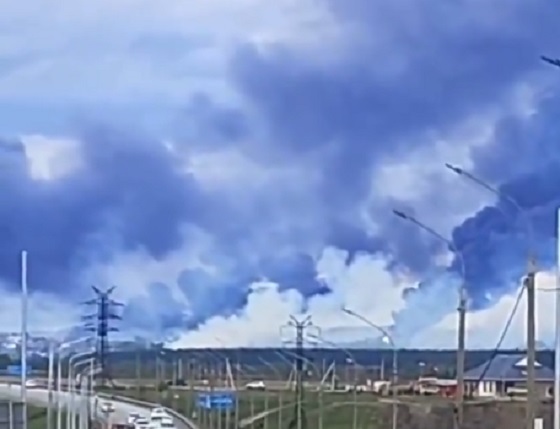
 Sam Cooper
Sam Cooper
“Borderline Insane”: Analyst Warns American Military Must Prepare as Ukraine’s Deep Strike Signals China Could Launch Similar Attacks from U.S. Ports in Event of War Over Taiwan

KYIV — In its most daring covert action of the war, Ukraine says it has destroyed or severely damaged more than 40 Russian long-range strategic aircraft in a meticulously planned drone assault that struck four military airbases deep inside Russian territory. The campaign, known as Operation Spider’s Web, marks a stunning escalation in Ukraine’s asymmetric warfare strategy—and what some analysts are calling a historic reversal that could tilt the odds in peace negotiations against the larger aggressor.
The mission—overseen by Ukraine’s Security Service (SBU) and personally authorized by President Volodymyr Zelensky—reportedly took more than 18 months to prepare. SBU operatives smuggled first-person-view drones into Russia hidden inside wooden mobile cabins mounted on civilian cargo trucks. When activated remotely, the trucks’ roofs opened and the drones launched directly at parked Russian bombers.
“This was our most long-range operation,” Zelensky posted Sunday on X, noting the assault involved only Ukrainian forces. “One year, six months, and nine days from the start of planning to execution. These are Ukrainian actions that will undoubtedly be in history books.”
The strikes hit four airbases far from the front lines: Belaya airbase in Irkutsk Oblast, Olenya in Murmansk near the Arctic Circle, Dyagilevo in Ryazan Oblast, and Ivanovo in central Russia.
According to Ukrainian intelligence sources cited by the BBC, the damaged assets include Tu-95 and Tu-22M3 nuclear-capable strategic bombers, as well as an A-50 airborne early warning and control aircraft. The total estimated damage exceeds $2 billion USD.
Footage posted on Russian and Ukrainian Telegram channels showed plumes of smoke rising from the affected airbases. In one widely circulated clip, a bystander can be heard saying drones had launched from “a Kamaz truck near a petrol station.” Russian state media acknowledged strikes across five regions and labeled the attacks “a terrorist act.” However, prominent Russian military bloggers confirmed the loss of aircraft and critical infrastructure, including fuel storage depots.
Irkutsk Governor Igor Kobzev confirmed the Belaya strike, stating the drones had been launched from a civilian truck and that the situation was “under control” with no casualties reported.
SBU officials told the BBC that Spider’s Web was a “logistical and operational breakthrough,” describing a multi-stage smuggling effort that first inserted the FPV drones into Russia, followed later by mobile launch platforms. “Once on Russian territory, the drones were hidden under the roofs of these cabins,” one source said. “At the right moment, the roofs were remotely opened, and the drones took off.”
Zelensky credited SBU chief General Vasyl Maliuk with executing the unprecedented strike. “I thanked General Maliuk for this success of Ukraine,” Zelensky said. “We are doing everything to make Russia feel the need to end this war. Russia started this war. Russia must end it.”
The operation comes amid intensifying cross-border attacks by both sides. Hours earlier, a Russian missile barrage killed 12 Ukrainian soldiers and injured over 60 at a training base. Ukrainian air defenses responded by reportedly downing 385 Russian aerial targets across multiple regions.
The timing of the drone assault—just ahead of a second round of peace talks in Istanbul on Monday—appears aimed at pressuring Moscow. Zelensky has demanded a “complete and unconditional ceasefire,” while Russian officials are calling for a halt to Western arms transfers to Ukraine, a condition Kyiv rejects.
“These strikes are a clear and effective guarantee of Ukraine’s security,” Zelensky said. “Glory to Ukraine.”
Military analyst Tom Shugart noted the implications of the strike could extend far beyond the European theater, warning that Ukraine’s use of covert drone launches deep inside enemy territory raises implications for China’s global trade and access to Western ports.
“A reminder, given today’s Ukrainian drone strikes, that it is becoming borderline-insane that we routinely allow ships owned and operated by DoD-designated Chinese military companies to sit in our ports with thousands of containers onboard and under their control,” Shugart posted Sunday afternoon, referencing mounting U.S. tensions with China over its aggression toward Taiwan.
The Bureau is a reader-supported publication.
To receive new posts and support my work, consider becoming a free or paid subscriber.
Invite your friends and earn rewards
conflict
Beijing ‘Imminent’ Threat to Taiwan: U.S. Defense Secretary Issues Stark Warning
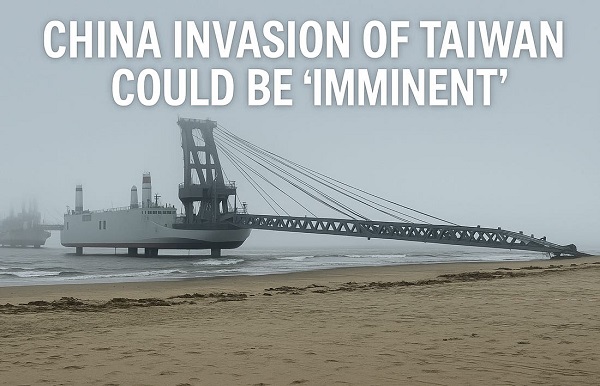
 Sam Cooper
Sam Cooper
“It has to be clear to all that Beijing is credibly preparing to potentially use military force to alter the balance of power in the Indo-Pacific.”
In an unprecedented escalation of U.S. military preparedness rhetoric, Defense Secretary Pete Hegseth today warned that the threat of a Chinese invasion of Taiwan—and broader actions against Asian states—is “real and could be imminent.” Speaking at the Shangri-La Dialogue in Singapore, Hegseth made clear that the United States now views China’s intentions as an urgent and rising threat, not a distant risk.
“We are preparing for war in order to deter war to achieve peace through strength,” Hegseth said. “Any attempt by Communist China to conquer Taiwan by force will result in devastating consequences for the Indo-Pacific and the world. There’s no reason to sugarcoat it. The threat China poses is real and could be imminent.”
A clip of Hegseth’s address quickly circulated on social media. In response, Taiwan’s security chief Joseph Wu wrote: “It’s critical for all U.S. allies and partners to remain clear-eyed about China’s ambitions. Taiwan is investing seriously in its own defense. But recent PLA activity suggests Taiwan is not the only target. We must work together to prevent the CCP from dominating the Indo-Pacific.”
Recent military intelligence shows that Beijing is actively preparing for large-scale operations. In April 2025, China launched “Strait Thunder 2025A,” a major military exercise involving 135 warplanes and 38 warships encircling Taiwan. The drills simulated both a blockade and an amphibious landing. Around the same time, the Shandong aircraft carrier group maneuvered to within 24 nautical miles of Taiwan’s coast. Intelligence analysts warn that such incursions are likely to increase, with growing concern that operations staged as exercises could serve as cover for the sudden launch of a full-scale invasion.
“U.S. allies in the Indo-Pacific can and should upgrade their own defenses,” Hegseth added. “It has to be clear to all that Beijing is credibly preparing to potentially use military force to alter the balance of power in the Indo-Pacific.”
He drew a direct connection to President Donald Trump’s campaign to push NATO countries toward increased defense spending.
The Indo-Pacific Will Be ‘Your Generation’s Fight’
Two days before Hegseth’s speech in Singapore, a parallel message echoed across the U.S. military establishment. On May 29, speaking at the U.S. Air Force Academy’s commencement, Secretary of the Air Force Troy E. Meink delivered a blunt forecast: the cadets’ careers would not be shaped by past wars in the Middle East, but by looming great-power conflict in the Pacific.
“Class of 2025,” Meink said, “the Indo-Pacific will be your generation’s fight. And you will deliver the most lethal force this nation has ever fielded—or we will not succeed.”
Framing China as the central challenge of the era, Meink echoed Hegseth’s call for deterrence through strength. He stressed that defending the U.S. homeland must go hand-in-hand with building a Joint Force capable of neutralizing China’s expanding military capabilities—including its missile arsenal, cyber units, and maritime coercion in the East and South China Seas.
Meink also pointed to the modernization of U.S. deterrence infrastructure, including development of the so-called “Golden Dome”—a proposed network of land- and space-based sensors and interceptors designed to detect and defeat hypersonic and ballistic missile threats aimed at North America and U.S. bases abroad.
China’s Amphibious Blueprint: From Dockyard to Beachhead
Meanwhile, analysis of striking new satellite imagery reveals a dramatic development in China’s military posture. A series of large vessels under construction at Chinese shipyards appear designed to sail toward Taiwan’s shores, lower pilings into the seabed, and transform into floating sections of a mobile landing dock—assembled in real time upon arrival.
The design, which eliminates the need for ports or tugboats, reinforces mounting concerns that Beijing’s preparations are not symbolic, but operational.
Naval analyst Tom Shugart, building on open-source intelligence findings, released high-resolution imagery showing the vessels’ defining features. Each ship appears purpose-built for amphibious warfare—engineered to deliver tanks and armored vehicles directly onto contested beaches with speed and efficiency.
“These aren’t simple barges,” Shugart wrote. “They look like self-powered landing ships.”
Each vessel includes six vertical pilings that can be lowered to anchor the ship to the ocean floor, stabilizing it during offload. Two wide ramps can be unfolded to connect with roll-on/roll-off cargo ships, allowing vehicles to drive directly from transport to shore.
This floating dock system would allow China to launch a mechanized amphibious assault with minimal delay—an essential capability for a rapid strike across the Taiwan Strait.
-

 Censorship Industrial Complex2 days ago
Censorship Industrial Complex2 days agoLegal warning sent to Ontario school board for suspending elected school council member
-

 Fraser Institute2 days ago
Fraser Institute2 days agoHealth-care lessons from Switzerland for a Canada ready for reform
-

 Business2 days ago
Business2 days agoThis Sunday, June 8, is Tax Freedom Day, when Canadians finally start working for themselves
-

 Bruce Dowbiggin2 days ago
Bruce Dowbiggin2 days agoI’m A Victim, You’re A Victim, Wouldn’t You Like To Be A Victim, Too?
-

 Red Deer Rebels2 days ago
Red Deer Rebels2 days agoRebels hire two-time league champion Marc Habscheid as Head Coach
-
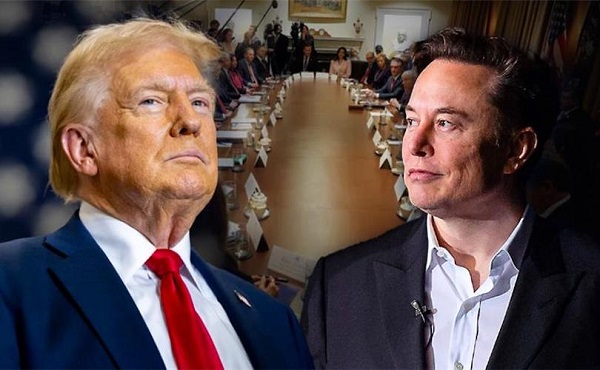
 International1 day ago
International1 day agoMusk claims Trump is named in Epstein files after Trump says Elon went ‘CRAZY’
-

 Health2 days ago
Health2 days agoThe new WHO Pandemic Treaty poses grave threats to freedom and national sovereignty
-

 Crime22 hours ago
Crime22 hours agoExclusive Analysis: Chinese Couple Smuggled ‘Agroterrorism Weapon’ Fungus into U.S., Echoing Winnipeg Lab Ebola Espionage Case




